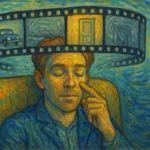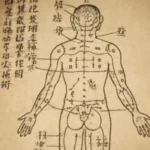From Relief to Root: When and How to Go Deeper in EFT
Mentor’s Note: This post is part of an ongoing series addressing recurring questions from practitioners in the EFT Universe certification program. These questions often echo each other because they point to the same developmental milestone: the moment when a practitioner begins moving from applying technique to thinking strategically. Today’s theme is one of the most common—and one of the most important—strategic questions we face.
“Did I Go Deep Enough?” — The Strategic Turning Point
A frequent concern sounds like this:
“My client felt better after we tapped on a recent event, but I can’t shake the sense there might be an earlier root I didn’t reach. Was the session complete, or should I have gone further back?”
Sometimes it comes out differently:
“We worked on a specific event, but the intensity didn’t fully resolve. My client kept circling around the same theme and talking about it as a lifelong pattern. I felt uncertain how to guide us toward the core without forcing it.”
If you’ve ever walked away from a session with that question—Was that enough?—you’re not alone. It’s not a sign of failure. It’s a signal that your intuition is maturing, nudging you toward strategic depth.
And here’s the first answer: If your client felt relief, you did it right. Clearing a recent event is a complete success. It gives the client lived proof that EFT works, and that sense of safety is what makes it possible to revisit earlier, more foundational experiences later. In practice, a good session today often sets the stage for a profound one tomorrow.
🌿 The Map: Three Analogies for Finding Your Way
When the session feels confusing, it’s usually because we’ve lost the map. These three analogies help us understand the structure of an issue and orient ourselves:
1. The Tabletop and the Table Legs
A belief such as “I’m not good enough” is like the tabletop. It looks solid, but it’s supported by legs—the specific memories that make it feel true. We can’t collapse the table by staring at it; we need to tap on the legs. Each collapsed leg weakens the belief.
2. The Forest and the Trees
A global issue such as “I’m anxious in relationships” is the forest. It’s far too vast to clear all at once. We must focus on one tree at a time: a specific, emotionally charged incident. Clearing a tree doesn’t eliminate the whole forest, but it thins it out and makes the landscape navigable.
3. The Roots and the Branches (A Teaching Extension)
Every tree has its own structure:
- Branches: The recent events, symptoms, or offshoots where we often begin.
- Trunk: The core belief that grows from the root, such as “I am unlovable.”
- Root: The original event where that belief was planted.
Tapping on a branch is valuable and brings relief. Reaching the root can transform the entire tree. Both are part of the process, and both matter.
🕵️♀️ How to Know When to Gently Guide Deeper
The client’s own system will tell you when it’s time to go further. Signals include:
- No Shift: The SUD level stays high despite several rounds.
- Looping: The client keeps circling the same feelings or themes.
- Language of Layers: They describe the issue as having “layers” or as being “bigger” than the current event.
- Open Door Memories: They mention older experiences, even casually. This is often an invitation.
It’s important to distinguish between technical stuckness (not having tested enough aspects) and readiness (the system isn’t ready to go deeper yet). Both matter, and both call for patience.
🧘♀️ Gentle Invitations (Not Commands)
When the signals show up, your role is to invite, not to direct. A few ways to open the door:
- “This feeling you’re noticing now… does it remind you of an earlier time?”
- “When was the first time you remember feeling something like this?”
- “If this feeling had an age, how old would it be?”
If the client hesitates, that’s information, not failure. Safety comes first. You can even tap on the hesitation itself:
“Even though I’m not sure about going back there…”
This approach often clears the resistance and makes the deeper work possible.
🧠 Key Takeaways
- ✅ Clearing a recent event is real progress—it builds safety, trust, and nervous system readiness.
- 🧭 Use the Table/Legs, Forest/Trees, and Roots/Branches analogies as orientation tools.
- 🔍 Watch for signals that point to deeper work, while distinguishing between stuckness and unreadiness.
- 🕊️ Always invite, never push. Your attunement to the client’s readiness is your most important tool.
💬 Closing Reflection
For mentees: If you’re asking “Did I go deep enough?” you’re already stepping into the strategic layer of EFT. That question itself is progress.
For all readers: EFT is not about diving headfirst into the deepest memories. It’s about creating safety, clearing what’s ready, and trusting that each branch cleared brings us closer to the root in a way that lasts.
What helps you know when it’s time to guide a session deeper?
Share your reflections in the comments.
*A note on the analogies: Both Gary Craig and Dawson Church/EFT Universe have utilized the “forest” and “table” metaphors, though with different emphasis. Gary Craig often used both, with a frequent focus on the “Forest/Trees.” Dawson Church and EFT Universe, while having used the “Forest” analogy, are known for their extensive use and popularization of the “Tabletop/Legs” model. The structure in this article reflects these dominant associations.



